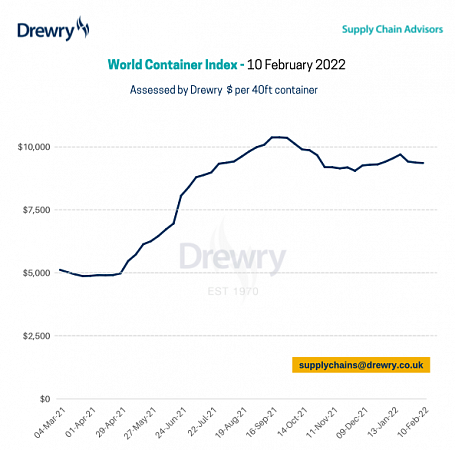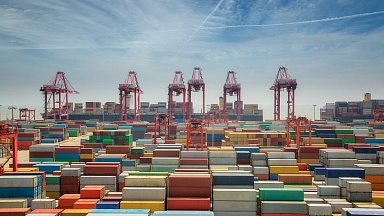Detailed assessment for Thursday, 10 February 2022
- The composite index decreased marginally by 0.5% this week, but, remains 80% higher than a year ago.
- The average composite index of the WCI, assessed by Drewry for year-to-date, is $9,468 per 40ft container, which is $6,486 higher than the five-year average of $2,982 per 40ft container.
- Drewry’s World Container Index composite index decreased marginally by 0.2% to $9,359.10 per 40ft container, but is 80% higher than the same week in 2021. Freight rates on Shanghai — New York grew 2% or $310 to reach $13,437 per feu. However, rates on Shanghai — Los Angeles and Los Angeles — Shanghai fell 1% each to $10,437 and $1,250 per 40ft container respectively. Similarly, rates on Rotterdam — Shanghai and New York — Rotterdam dropped 3% each to reach $1,396 and $1,235 per feu respectively. Rates on Shanghai — Rotterdam, Shanghai — Genoa and Rotterdam — New York hovered around previous weeks level. Drewry expects rates to remain stable in the coming week.



